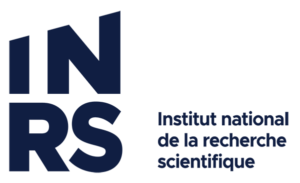INTEGRATED QUANTUM PHOTONICS WITH FERROELECTRIC MATERIALS
May 31 2024, 9:00AM - 8:00PM (PT)
Workshop on Ferroelectric Materials for Silicon Photonics
Click HereRESEARCH
Chip-scale quantum photonics
Our goal is to transform quantum photonics from an optical table to a silicon chip by incorporating ferroelectric materials such as barium titanite (BaTiO3 or BTO) and lithium niobate (LiNbO3 or LNO) into silicon photonic chips. We bring together researchers from across industry and universities with expertise in materials’ growth using molecular beam epitaxy (MBE), photonic chip design and fabrication, theoretical modeling, and quantum optics experimentation. Our research will develop the devices required to make photonic quantum computing commercially viable in both discrete and continuous-variable approaches.
Quantum information science and technologies that use photons as qubits have enormous unrealized potential, as suggested by the most convincing realization, so far, of a quantum algorithm operating much faster than its classical counterpart. Photons offer unique advantages as information carriers; for example, they travel at the speed of light, enabling ultrafast operations in contrast to other Quantum Computing (QC) architectures. They act as “flying qubits” that can transmit quantum information over long distances, enabling a series of algorithms for distributed QC, the so-called quantum internet. They can also be easily integrated with existing semiconductor fabrication processes, offering the potential for low-cost mass production.
Ferroelectric materials for photonics
Lithium niobate (LNO) has been the workhorse material for the optical telecommunications industry since the 1970s, where LNO has been used to make high-speed modulators for data transmission. In the early 2000s, modulators in silicon were developed, employing a diode based on a Si PN junction. Around 2010, these silicon modulators were manufactured in high volume by companies such as Intel, for use in transmitting data throughout data centres; Si-based modulators have been manufactured in much higher volume than LNO, at a cost at least 1000X lower. However, Si-based modulators have performance inferior to their LNO counterparts (high optical loss, poor nonlinear optical performance, impure phase modulation with a parasitic amplitude modulation, limited operating electro-optic bandwidth), particularly when compared to the recently developed thin-film LNO (TFLN) and BTO platforms, limiting the development of future systems such as photonic quantum computers and potentially limiting further growth in the data communications capacity necessary for future AI workloads. BTO exhibits the largest Pockels coefficient in thin-film form reported to date (over 900 pm/V), significantly higher than LNO, and has been demonstrated to operate at cryogenic temperatures.
We aim to develop a technology that combines the best of both worlds – silicon for high-volume and low-cost manufacturing, and ferroelectrics (LNO and BTO) for high performance requirements.
Funding
Our collaboration is funded by NSERC’s Alliance Consortia Quantum grants – Project entitled “Consortium on Integrated Quantum Photonics with Ferroelectric Materials”. Our industry partners are Applied NanoTools Inc., Ki3 Photonics Technologies Inc., Photonic Inc., and Xanadu Quantum Technologies Inc.
Academic members of the consortium:
- R. de Sousa, Physics and Astronomy, University of Victoria (leader)
- L. Chrostowski, Electrical and Computer Engineering, The University of British Columbia (co-leader)
- P.E. Barclay, Physics and Astronomy, University of Calgary
- S. Barzanjeh, Physics and Astronomy, University of Calgary
- H.K. Lau, Physics, Simon Fraser University
- T. Lu, Electrical and Computer Engineering, University of Victoria
- R. Morandotti, Centre Énergie Matériaux Télécommunications, INRS
- I. Paci, Chemistry, University of Victoria
- V. Van, Electrical and Computer Engineering, University of Alberta
- J.F. Young, Physics and Astronomy, The University of British Columbia
- K. Zou, Physics and Astronomy, The University of British Columbia







